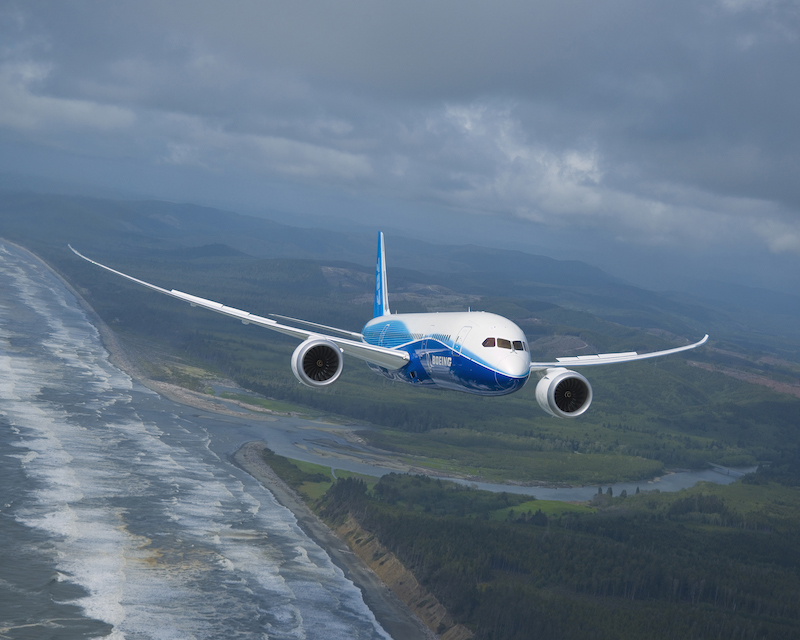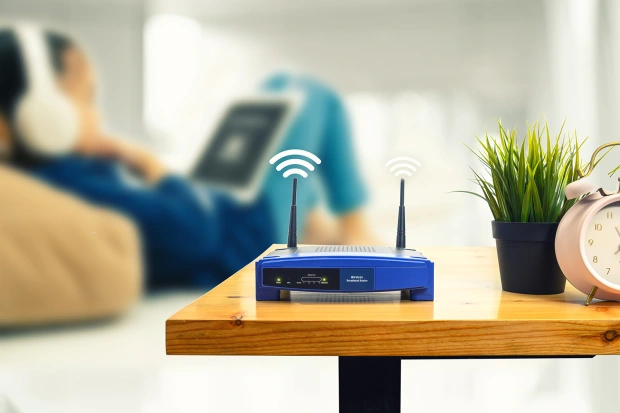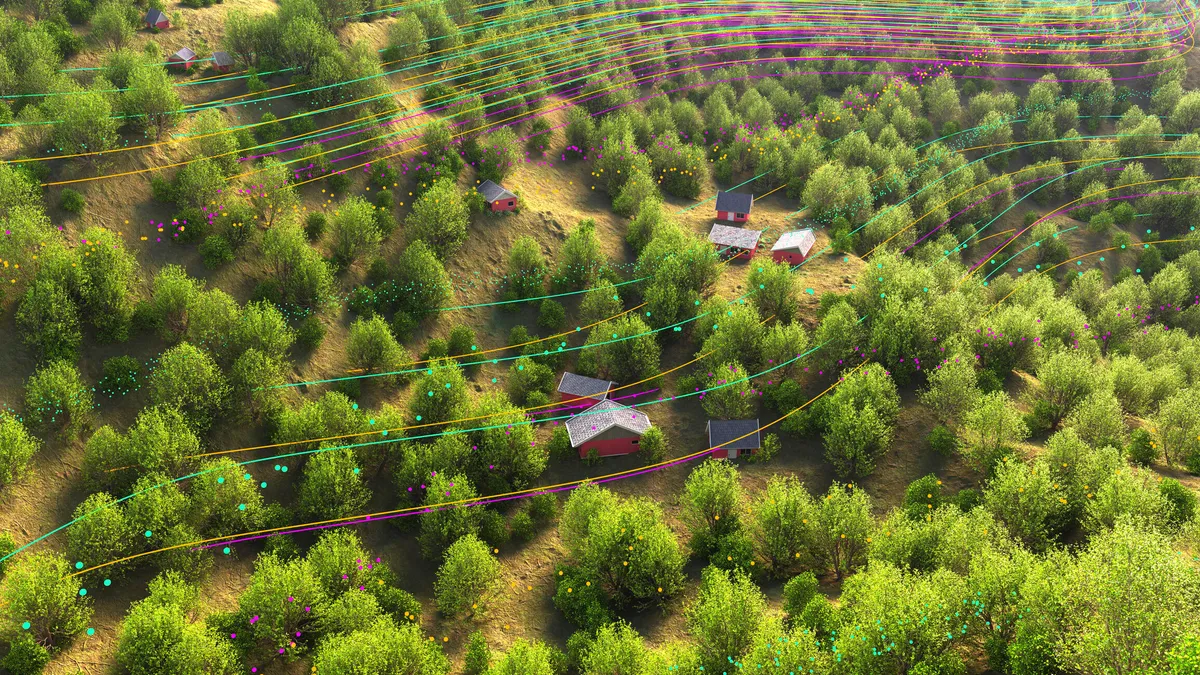
Alexis Hickox, head of global business development, Cabin Solutions at Collins Aerospace and Boeing’s inflight entertainment and connectivity strategy lead, Bryan Wiltse, reveal the latest in inflight wifi and connectivity thinking.
No matter how large the satcom antenna or well-stocked the server, wireless IFE and communications count on reliable, easily accessed wifi connectivity between aircraft systems and passenger devices.
And while messaging and streaming video keep the customers in the cabin happy, airlines are also finding an increasing role for wifi-enabled data transfer, not only for aircraft health monitoring and safety services, but also inflight planning and crew communications.
Compare your mobile phone, tablet, laptop or games console to the latest product online, and chances are it’s already not the latest model – obsolescence in 12 months is easily achieved and for a long lead time industry that’s as tightly regulated as aerospace, keeping pace is a major headache.
The airlines and connectivity providers have themselves compounded the challenge with years of claiming their service brings a home or office experience to the sky. Some industry insiders claim the experience has improved so quickly that inflight connectivity has struggled to keep pace.
The reality is that when it comes to moving data on or off the aircraft, physics and technology have so far denied airlines the ability to offer a genuine home/office experience to individual passengers, regardless of the quality of service on the ground. With technology continuing to advance, the gap between expectation and delivery is narrowing.
Bryan Wiltse says the OEM works hard to keep pace. “Boeing is constantly evaluating technology and working with expert suppliers in the connectivity space to provide the most current systems available. We work through rigorous evaluation processes to ensure the technology is safe and ready for introduction on a commercial airplane, while the focus on industry standards and standardised installation allows for easier upgrades as technology evolves.”
And, he agrees: “The consumer electronics industry very much drives what we’ll see next in airborne wifi and connectivity. Passengers and airlines will expect the next device, experience or functionality to work in the air as it does on the ground. This will drive future functionality within the connected airplane.”

Alexis Hickox, head of global business development, Cabin Solutions at Collins Aerospace, has worldwide responsibility for the company’s cabin connectivity business, primarily from the passenger perspective.
She says several elements are responsible for delivering a great wifi passenger experience, including the right broadband network: “We use Inmarsat’s GX aviation network, which is perhaps the highest performing available today.
“Passengers are particularly annoyed by ‘black spots’ between satellites, or their connection dropping off because of patchy satellite networks, put together using capacity provided by different operators. GX is provided by one party, with satellite coverage from overlapping beams, plus spot beams that can be directed at busy areas, delivering a seamless internet experience.”
When airlines wirelessly stream content only from onboard servers, satellite connectivity is irrelevant to wifi efficiency, but when internet connection is offered, wifi becomes only the conduit through which poor quality service is delivered to a passenger device – continuously needing to log back on very quickly becomes ‘extremely onerous’, Hickox says.
Meanwhile, the process of creating a ‘connected airplane’ is changing. Many airlines are continuing to upgrade aircraft fleets for satcom and wifi connectivity, while new-build airliners are increasingly delivered either equipped with IFEC suites, or provisioned ready to accept them with minimal modification.
In fact, the process of installing cabin wifi, streaming IFE and/or satcom connectivity is perhaps less demanding than expected.
Wiltse notes: “All Boeing’s production airplanes are capable of accepting wifi system installations, although they remain a customer choice, and airlines must select them for installation. Post-production installations can be purchased through Boeing Global Services.
“The difference between a production and retrofit installation is minimal. Regardless, installations include the same system hardware – broadband satellite antenna and subsystem, file server and wireless access points. The differences, if any, will typically be in the system wiring and equipment location. We provide post-production support, while Boeing Global Services supports airline requests for connectivity.”

Considering the work required to engineer an aircraft for wifi, Wiltse reports: “Boeing has not made any specific airplane design or material changes to support wifi systems, but we have completed extensive airplane-level testing to determine the most advantageous equipment installation locations to maximise wireless coverage within the airplane. These optimised installation locations allow for the best possible aircraft wifi environment for the passengers and crew.”
Collins Aerospace’s Hickox explains the essential architecture of a cabin wifi network. “A wireless LAN infrastructure, capable of supporting multiple user sessions simultaneously, is required. Collins Aerospace uses a Miltote offering, which we’ve integrated into our overall solution.
“It means each wireless access point [WAP] can support around 60 high-definition streams concurrently, plus 255 IP addresses. On a narrowbody we’d usually install four WAPs, and five on a widebody, providing coverage for 240 passengers concurrently on the narrowbody and 300 on the widebody.
“Looking at a Collins Aerospace solution from a hardware perspective, it first requires the satellite hardware, comprising a modman, Ka-band aircraft network data unit [KANDU], radio frequency unit, antenna and radome. In the cabin, the wireless hub is a gateway server, linked to the WAPs with cabling.”
Collins Aerospace focuses on providing connectivity through its wireless IFE, but Hickox says the wifi architecture for a ‘simple’ streaming system linked only to an onboard server, would essentially be identical.
Considering the cabin as a wifi environment, Hickox reckons delivering good coverage is really relatively simple, a statement that may surprise those of us whose phones pick up their home router 100ft away in the garden, but fail to see it from the adjacent room. “The aircraft cabin isn’t a difficult environment for wifi. And, using high-performing WAPs that cover a considerable range, we can create separate SSIDs, creating discrete VPN networks for the crew and passengers. Neither interferes with the other and they’re securely managed.”
Cybersecurity ought to be a major concern in just about every aspect of our day-to-day lives, including when we connect to a wifi network and onto the internet during a flight. Collins Aerospace manages individual passenger security from the ground, via a system employing Sandvine cybersecurity software.

“It manages the network, helping optimise the passenger experience and providing tools, including TCP accelerators, to ensure data is protected. Our service is PCI compliant, so all data is also protected according to local rules and regulations.”
Hickox mentions Collins Aerospace’s ground infrastructure frequently, and it’s clearly a key component in delivering its IFE and communications offering, right down to the wifi that connects passenger devices via WAP to the server and onto broadband.
What does the infrastructure look like? “We integrate into Inmarsat’s network and we have New York and London as our primary ‘meet me’ points. They integrate into our ‘private’ global network, which is able to route data back to airline headquarters, for example. We also have our own data centres and capability to interface into airline networks.”
Beyond happy passengers
Hickox notes that Collins Aerospace is primarily seeing its airline customers seeking connectivity solution as a means of entertaining passengers, enabling them to source their own, online amusement.
Happy passengers certainly help make profitable airlines, but Hickox acknowledges there’s considerably more potential in wifi connectivity than simply entertaining customers. Gate and other aircraft communications can speed flight preparations, inform preventative maintenance and keep passenger data updated.
Boeing’s Wiltse says there’s no need for airlines to wait for suitable technology: “The capability to connect the airplane from gate-to-gate is available today. The ground connection can leverage various types of technology – cellular, 802.11, 802.16 and so on.
“In addition, the capability for continued use of the satellite broadband connection is now approved. Moving data – passenger manifest, catering requests, airplane health, media content and more – can be accomplished in multiple ways both on the ground and in the air.”
Airlines are already exploiting the potential of wifi at its most simple – in the cabin – as well as employing it as an operational tool, but must carefully apply resources to the critical, ongoing task of delivering quality customer support; passengers are typically uninterested in the mechanics, or physics, of an IFEC system, until it breaks.

Airlines, providers and OEMs are therefore well advised to have robust customer service provision in place as an essential component of their overall connectivity provision.
It’s a requirement Collins Aerospace recognises. Hickox explains: “We have a number of ground-based tools and operational systems providing customer support and the capability to monitor all the communications and hardware on an aircraft, through our satcom dashboard.
“It actually covers flight deck and cabin, showing any problems with onboard equipment. We also have a content management system that airlines have access to, so they can manage their passenger internet packages.
“It means they can analyse requirements on individual routes and tweak the specific internet offering to best serve their customers. So, there’s the passenger and content management side of things, including the AVOD and internet packages, which the airline performs directly, and then the operational side, where Collins Aerospace works.”
The company gathers performance and health data from the cabin wifi system in flight, just as it does from its IFE servers and satcom equipment. Information on aircraft movement returns to the ground via ACARS, enabling Collins Aerospace to follow it using its flight tracking functionality.
“We also monitor the connectivity status and aircraft communications, via the satcom network. It consumes a very small slice of the ‘pie’ of data coming off the aircraft.”
Personal devices
Anyone who’s enthusiastically tackled the packaging on a wireless speaker freshly arrived from Amazon will know that connecting even the simplest devices via wifi, or even Bluetooth, isn’t always quite as straightforward as it ought to be.
Inflight wifi to which a passenger can’t connect is perhaps almost as frustrating as a network that continuously drops out. And yet passengers from all over the world travel on airliners flown by international operators, bringing with them devices of various capabilities and specifications.
How does Collins Aerospace ensure they will all connect with the minimum of hassle?
“We support pretty much all operating systems and devices, but if we see an anomaly from a particular country, we test the affected devices in our lab as part of the programme implementation test phase. We test extensively to ensure our systems are compatible with indigenous devices and hardware.”
The process obviously requires that Collins Aerospace keep a close eye on the types of device likely to come on board when a new operator begins using its IFE systems, but there’s actually even more to it than that. “There’s also the challenge of what particular apps or messaging applications a country might have. We have to ensure our systems on the ground and in the air will interface with those as well.”
With the vast potential of satcom and wifi already extensively exploited, what’s next for the industry? Speaking for Collins Aerospace, Alexis Hickox first considers past challenges.
“Looking at the early providers in North America, the model was to provide full hardware and service, offering carriers a potentially low cost entry. I think the challenge now is for airlines to justify the investment in hardware and service provision, and the vendors need to help them find the business case that strikes the right balance between investment and return. It’s something Collins Aerospace can do well because we have so many systems on the aircraft and on the ground.
“Today, we find that when an airline is looking to move forward with internet provision, the evaluation stage is really about the business case and what they’ll do with the service. Providing internet to passengers is an important part and their expectation that it will be available is the major driver, but not the only benefit to the airline.
“Using the broadband link and secure flight deck wifi access for EFB applications, for example, or providing real-time, inflight data access and offload, deliver real operational advantages.
“Wireless IFE is also far more dynamic than traditional in-seat systems. Much of it is software-driven and airlines have considerably greater control over what they can do and when they can do it. Rather than having to wait for their IFE provider to support content changes, for example, they can do it themselves.”
Asked how Boeing sees its wifi future, Wiltse’s response is understandably circumspect: “The world has become more connected and the ever-increasing number of connected ‘things’ certainly provides intriguing opportunities within aerospace. Boeing is exploring the significant potential of this space.”
Click here to read the full article from Aviation Business News.












